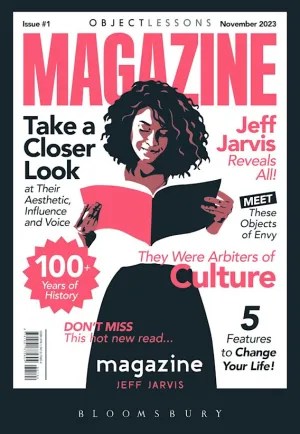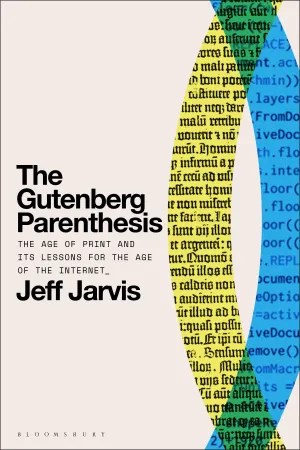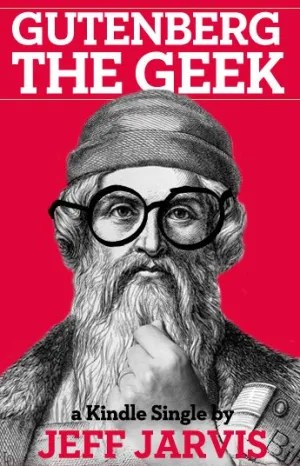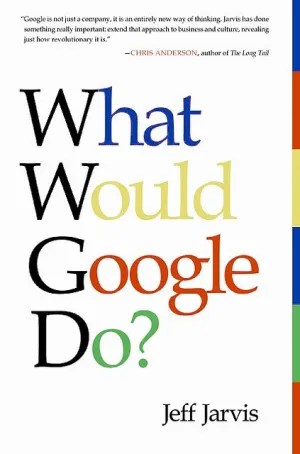
I have news: I am leaving CUNY’s Newmark Graduate School of Journalism at the end of this term. Technically I’m retiring, though if you know me you know I will never retire. I’m looking at some things to do next and I’m open to others. More on that later. Now, I want to recollect — brag — about my time there.
Eighteen years ago, in 2005, I was the first professor hired at our new school. The New York Times was dubious:
For some old-school journalists, blogging is the worst thing to hit the print medium since, well, journalism school. They may want to avert their eyes today, when Stephen B. Shepard, dean of the new Graduate School of Journalism at the City University of New York, is to name Jeff Jarvis director of the new-media program and associate professor.
On my first day on the job, after attending my first faculty meeting, I quit. I had suggested that faculty needed to learn the new tools of online and digital journalism and some of them jumped down my throat: How dare I tell them what to learn? This festered in me, as things do, and I emailed Steve Shepard and Associate Dean Judith Watson saying that we had made a mistake. I’d already quit my job as president of Advance.net. But, oh well.
Steve emailed me asking WTF I was doing. That curriculum committee was a temporary body. They weren’t on the faculty of the school. I was. Over lunch, Steve and Judy salved my neuroses and said I could teach that entrepreneurial journalism thing the committee had killed. I stayed.
Steve took a flier on me. It wasn’t just that I was a blogger and a neurotic but I had only a bachelor’s degree. I’ve always said that I am a poseur in the academy, a fake academic. Nonetheless, I’ve had the privilege of starting three master’s degrees at the school. (Recently, visiting with actual academics at the University of St Andrews, I said I had started three degrees and they looked at me cock-eyed and asked why I hadn’t finished any of them.)
With Steve, I took our entrepreneurial class and turned it into the nation’s first Advanced Certificate and M.A. in Entrepreneurial Journalism, to prepare journalists to be responsible stewards of our field. The program has been run brilliantly ever since by my colleague Jeremy Caplan, a most generous educator. It has evolved into an online program for independent journalists.
I’m grateful that our next dean, Sarah Bartlett, also took a flier on involving me in her strategy for growth and we built much together. This week, I’m teaching the fourth cohort in our News Innovation and Leadership executive program. I’d long seen the need for such a degree, so news people would not be corrupted getting MBAs, and so our school, dedicated to diversity, would have an impact not just at the entry level in newsrooms but also on their management. I had to wait to recruit the one person who could build this program, Anita Zielina, and she has done a phenomenal job; she is the leaders’ leader. The program is in great hands with her successor, Niketa Patel. (And I plan to stick around to teach with them in this program after I leave.)
My proudest accomplishment at the school and indeed in my career has been creating the Engagement Journalism degree in 2014, inspired when Sarah read what I’d written about building relationships with communities as the proper basis of journalism. She asked whether we taught that at the school. Not really, I said. How about a new degree? Cool, I said. We scribbled curricula on napkins. By the end of that week in California we had seed funding from Reid Hoffman, and by that fall we had students in class. I had the great good fortune of hiring, once again, the one person who could build the program, Dr. Carrie Brown, with whom I’ve had the privilege of teaching and learning ever since. She is a visionary in journalism.
The program is, I’m sad to say, on pause right now. But after having just attended preconferences at AEJMC and ONA on Engagement Journalism, I am gratified to report that the movement is spreading widely. Each gathering was filled with journalists, educators, and community leaders dedicated to centering our work on communities, to building trust through listening and collaboration, to valuing the experience-as-expertise of the public over the tired doctrine of journalistic objectivity, and to repairing the damage journalism has done. I have told our Engagement students that they would be Trojan horses in newsrooms and they have been just that, getting important jobs and reimagining and rebuilding journalism from within.
I am proud of those graduates as I am of those from the executive and Entrepreneurial programs. Since arriving at the school, I have said to each class that I am too old to change journalism. Instead, I would watch and try to help students take on that responsibility. It is wonderful to witness their success. Of course, there is much yet to do.
Lately, I have turned my attention to internet studies and the wider canvas on which journalism should work in our connected world. What interests me most is bringing the humanities into the discussion of this most human enterprise, which has for too long been dominated (as print was in its first half-century) by the technologists. This is work I hope to continue.
I love starting things. In my career, I have had the honor of founding Entertainment Weekly at Time Inc., and lots of web sites at Advance. Here I had the great opportunity to help start a school. At the Tow-Knight Center, which I direct, we started communities of practice for new roles in newsrooms; two of these organizations have flown the nest to become independent and sustainable: the News Product Alliance and the Lenfest Institute’s Audience Community of Practice. I’m also proud to have had a small role in helping at the start of Montclair State’s Center for Cooperative Media, which is doing amazing work in Engagement under Stefanie Murray and our alum, Joe Amditis. Those are activities I expected from our Center.
What I had not imagined was that the Center would become an incubator for new degrees. That was made possible by funders. I also never thought that I’d be in the business of fundraising. But without funders’ support, none of these programs would have been born.
Sarah Bartlett taught me much about raising money, because she’s so good at it. I haven’t heard her say it just this way, but from her I learned that fundraising is about friendship. I am grateful for the friendship of so many supporters of the school and of my work there.
My friend Leonard Tow challenged Steve and me — with a $3 million challenge grant — when we said we wanted to start a center dedicated to exploring sustainability for news. Emily Tow, who heads the family’s foundation, took us under her wise wing and patiently taught us how to tell our story. It worked. Our friend Alberto Ibargüen, CEO of the Knight Foundation, asked Steve what would make his new school stand apart. Steve said entrepreneurial journalism. Alberto matched the Tows’ grant and the Tow-Knight Center was born. Knight’s Eric Newton was the one who insisted we should make our Entrepreneurial Journalism program a degree and later Jennifer Preston supported our work there.
As time went on, Len Tow also endowed the Tow Chair in Journalism Innovation, which I am honored to hold.
When my long-time friend Craig Newmark decided to make it his life’s mission to support journalism (and veterans and cybersecurity and women in tech and pigeons), he generously told me to bring him an idea and thus was born Tow-Knight’s News Integrity Initiative, also supported by my Facebook friends (literally), Áine Kerr, Meredith Carden, and Campbell Brown. Next, Craig most generously endowed the school that now proudly carries his name. His endowment has been a life-saver in the crisis years of the pandemic. His friendship, support, and guidance are invaluable to me. And we love nerding about gadgets.
I have more friends to thank for their support: John Bracken, way back when he was at the MacArthur Foundation, gave me my first grant to support Entrepreneurial Journalism students’ enterprises. Ford, Carnegie, McCormick, and others contributed to what has added up to — I’m amazed to say — about $53 million in support in which I had a hand.
And I am grateful for the latest support of the Center, thanks to my friend Richard Gingras of Google. (By way of disclosure, I’ll add that I have not been paid by any technology company.)
I must give my thanks to Hal Straus and Peter Hauck, who worked alongside me — that is to say, tolerated my every inefficiency and eccentricity — managing Tow-Knight, as well as other colleagues (especially Jesenia De Moya Correa), who made possible the convenings the Center brought to the school. The latest were a Black Twitter Summit convened by Meredith Clark, André Brock, Charlton McIlwain, and Johnathan Flowers, and a gathering of internet researchers led by Siva Vaidhyanthan. I have learned so much from such scholars, journalists, technologists, and business and community leaders who have lent their time to the school and the Center.
Finally, I’d like to thank my friend Jay Rosen of NYU, who from the start has taught me much about teaching and scholarship.
Having subjected you to my Oscar speech, I won’t burden you now with valedictory thoughts on the fate of journalism. That, too, awaits another day. But there’s one more thing I’m grateful for: the opportunity teaching has given me to research and write. I didn’t just blog, to the consternation of our neighbors at The Times, but also got to write books: What Would Google Do? (Harper 2009), Public Parts (Simon & Schuster 2011), and Geeks Bearing Gifts: Imagining New Futures for News (published by the CUNY Journalism Press in 2014).
I spent the last decade digging into and geeking out about Gutenberg and the vast sweep of media history, leading to The Gutenberg Parenthesis: The Age of Print and Its Lessons for the Age of the Internet, recently published by Bloomsbury Academic. Here is its dedication:

I have another brief work of media history, Magazine, in Bloomsbury’s Object Lessons series, coming out this fall (in which I finally tell my story of the founding of Entertainment Weekly). I have a future book about the internet and media’s moral panic over it — and AI ; I just submitted the manuscript to Basic Books. And I have another few books I want to work on after that. So, yes, I’ll be busy.
I do hope to continue teaching — perhaps internet studies or even book and media history — and to get back out speaking and consulting and helping start more things. I’d like a fellowship and would welcome the chance to return to serving on boards. Feel free to ping me if you have thoughts.
I am grateful for my time at CUNY and the privilege to teach there and wish nothing but the best future for the Newmark School.












